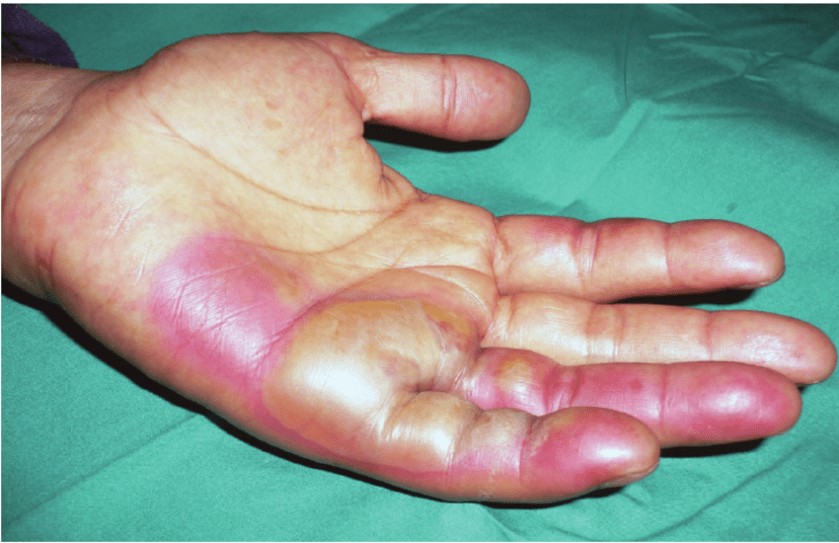 On September 13, 1987, Roberto dos Santos Alves and Wagner Mota Pereira entered the Instituto Goiano de Radioterapia (IGR), bent on theft. The private hospital was permanently closed at the time, and partly demolished. Alves and Pereira were looking for anything they might sell, for scrap.
On September 13, 1987, Roberto dos Santos Alves and Wagner Mota Pereira entered the Instituto Goiano de Radioterapia (IGR), bent on theft. The private hospital was permanently closed at the time, and partly demolished. Alves and Pereira were looking for anything they might sell, for scrap.
What they found, was more than either man had bargained for.
At one time, the radiotherapy unit in the central Brazilian city of Goiânia had served untold numbers of oncology patients, using ionizing radiation to control cell growth and even kill off any number of cancers, following surgical removal of the tumor.
Now, the abandoned machine was little more than a radiological time bomb.
Four months earlier, the IGR had attempted to remove their equipment, in the midst of a legal dispute with then-owner of the property, the Society of Saint Vincent de Paul. A court order prevented the removal, as owners of the company wrote letters to the National Nuclear Energy Commission, warning that someone needed to take responsibility “for what would happen with the caesium bomb”.

The radioactive source within the “external beam radio therapy” unit is a “wheel type” canister, with shielding walls of lead and steel and designed to rotate the source material when in use, between storage and irradiation positions.
Alves and Pereira removed the capsule from the heart of the machine, the stainless steel canister containing just over 3-ounces of highly radioactive caesium chloride, an inorganic salt derived from the radioisotope, caesium-137.
The court had posted a security guard, but he or she must have been snoozing, at the time. The two scavengers placed the canister in a wheel barrow, and brought it to Alves’ home to see what they had found.
The pair experienced the dizziness and diarrhea of radiation poisoning, but attributed symptoms to something they ate. Pereira developed burns on his fingers, the size and shape of the canister’s aperture. Meanwhile, Alves continued to tinker with the thing, finally freeing the capsule from its protective rotating head. Poking the capsule with a screwdriver, a dark blue light could be seen from within, the florescence of electromagnetic radiation.

Radiation burns would cost Pereira his fingers and Alves his right arm, but the two would survive the exposure. The owner of the scrapyard they sold the thing to, wasn’t so lucky.
 Five days after the theft, Alves sold the items he had pilfered, to a nearby scrapyard. Noticing the blue glow from the punctured capsule, the scrapyard owner thought the object might be valuable or even supernatural, and took the thing inside. Several rice-sized grains of the glowing material were pried from inside the capsule, as Devair Ferreira (the owner of the scrapyard) invited friends and family to come and see the strange, glowing substance. Ferreira’s brother Ivo brought some of the stuff home to his six-year-old daughter, about the time when Devair’s 37-year-old wife Gabriela, became ill.
Five days after the theft, Alves sold the items he had pilfered, to a nearby scrapyard. Noticing the blue glow from the punctured capsule, the scrapyard owner thought the object might be valuable or even supernatural, and took the thing inside. Several rice-sized grains of the glowing material were pried from inside the capsule, as Devair Ferreira (the owner of the scrapyard) invited friends and family to come and see the strange, glowing substance. Ferreira’s brother Ivo brought some of the stuff home to his six-year-old daughter, about the time when Devair’s 37-year-old wife Gabriela, became ill.
It was she who first noticed how many and how quickly, the people around her were getting sick. Too late for Ivo’s daughter Leide, who couldn’t resist rubbing the glowing blue powder on her skin, and showing it to her mother. Anyone who ever raised a six-year-old daughter, knows what that must have looked like.

By the time the presence of nuclear radiation was discovered on the 29th, the Goiânia nuclear disaster qualified as a Five on the International Scale of Nuclear Events, the INES. Tons of topsoil had to be removed from a number of sites, and several houses, demolished.
 The incident was broadcast all over Brazil, and 130,000 people people flooded into area hospitals, afraid they had been exposed. One thousand individuals showed greater than background levels of radiation, 249 showed significant signs of contamination.
The incident was broadcast all over Brazil, and 130,000 people people flooded into area hospitals, afraid they had been exposed. One thousand individuals showed greater than background levels of radiation, 249 showed significant signs of contamination.
Four died. The wife of the scrapyard owner Gabriela, who was first to figure it all out. Two employees who had worked to remove the lead for its scrap value, Israel dos Santos aged 22 and Admilson de Souza, aged 18. And that little girl, Leide, who was so happy to see her skin, glowing blue.
In the public civil suit that followed, the three doctors who owned the IGR, were ordered to pay 100,000 Brazilian Real, (equivalent to $24,000 US), for the derelict condition of the building. The two thieves who stole the stuff in the first place, were never charged.
If you enjoyed this “Today in History”, please feel free to re-blog, “like” & share on social media, so that others may find and enjoy it as well. Please click the “follow” button on the right, to receive email updates on new articles. Thank you for your interest, in the history we all share.



You must be logged in to post a comment.